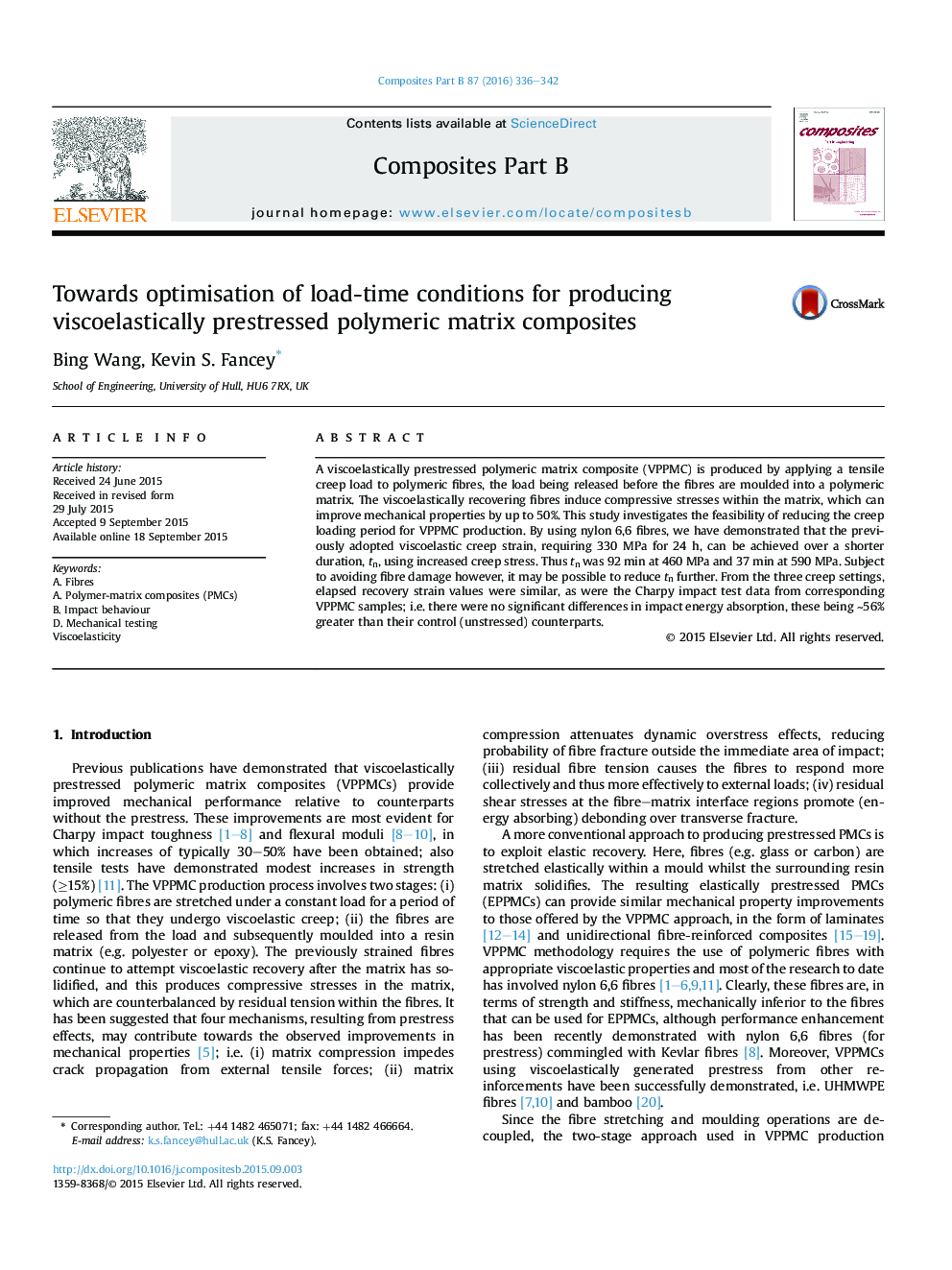| Article ID | Journal | Published Year | Pages | File Type |
|---|---|---|---|---|
| 817024 | Composites Part B: Engineering | 2016 | 7 Pages |
A viscoelastically prestressed polymeric matrix composite (VPPMC) is produced by applying a tensile creep load to polymeric fibres, the load being released before the fibres are moulded into a polymeric matrix. The viscoelastically recovering fibres induce compressive stresses within the matrix, which can improve mechanical properties by up to 50%. This study investigates the feasibility of reducing the creep loading period for VPPMC production. By using nylon 6,6 fibres, we have demonstrated that the previously adopted viscoelastic creep strain, requiring 330 MPa for 24 h, can be achieved over a shorter duration, tn, using increased creep stress. Thus tn was 92 min at 460 MPa and 37 min at 590 MPa. Subject to avoiding fibre damage however, it may be possible to reduce tn further. From the three creep settings, elapsed recovery strain values were similar, as were the Charpy impact test data from corresponding VPPMC samples; i.e. there were no significant differences in impact energy absorption, these being ∼56% greater than their control (unstressed) counterparts.
